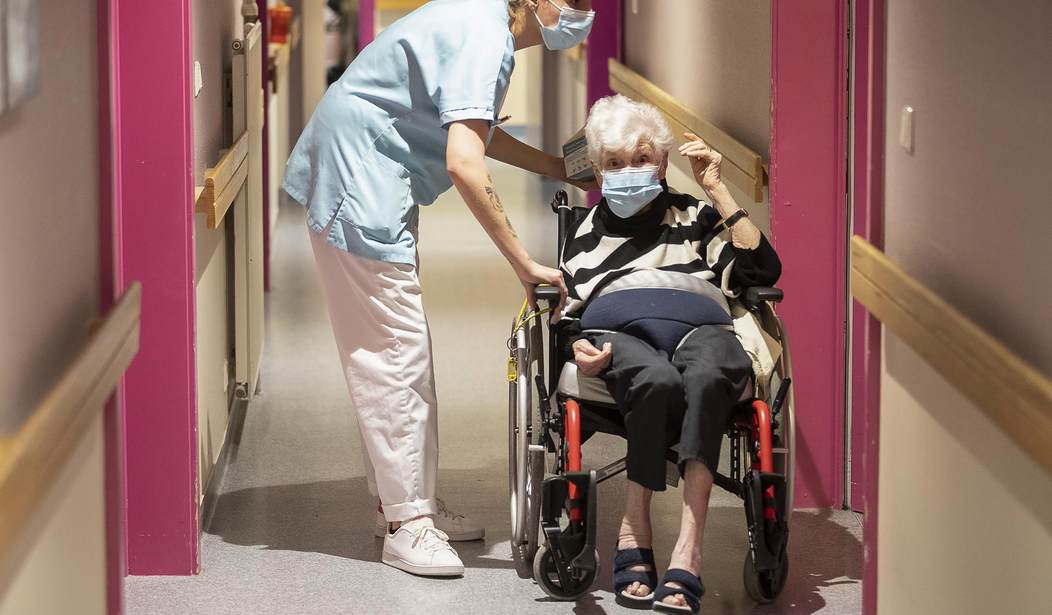A news item of interest recently popped up on the Google news feed, which I slavishly and hypocritically peruse most days on account of my job.
The all-seeing mind of Google understands — as I have sometimes been accused of being — that I am a food Nazi, and so it feeds me what it knows I’ll read.
Related: Are Cheerios Chemically Castrating the American Public?
Via ABC News (emphasis added):
Cartons of frozen shakes sold to nursing homes and other institutions are being recalled after an outbreak of listeria linked to the products.
The supplemental shakes are labeled under the brands Lyons ReadyCare and Sysco Imperial and were sold to institutional customers, including hospitals and long-term care facilities, the U.S. Food and Drug Administration said Friday.
The Centers for Disease Control and Prevention said listeria cases linked to the products date to 2018 but investigators had been previously unable to identify the source. Some 38 people were infected with listeria, including 11 who died. The FDA's investigation is still underway.
Listeria is bad and cause for concern.
But that’s now what really piqued my interest.
What did was the dystopian term “supplemental shakes” and the brand names “Lyons ReadyCare” and “Sysco Imperial.”
On a hunch that “Lyons ReadyCare” and “Sysco Imperial” sounded like corporate BS pseudo-food, I went and looked into what constitutes these products fed to nursing home patients nationwide.
You’re going to be shocked at the fruits of that investigation.
The second ingredient listed — which, by FDA rules, means that it is the second-most-prevalent ingredient — is corn syrup, immediately followed by high-fructose corn syrup.
The fifth ingredient is corn oil.
Most of the rest are various additives like xanthan gum, which doubles as industrial toilet bowl cleaner.
Via Lyons ReadyCare, “Chocolate Frozen Shake,” Item #1734, includes (emphasis added):
Ingredients: Nonfat Milk, Corn Syrup, High Fructose Corn Syrup, Maltodextrin, Corn Oil, Water, Contains 2% or less of Soy Protein Isolate, Whey Protein Concentrate, Sugar, Cocoa Processed with Alkali, Mono and Diglycerides, Guar Gum, Xanthan Gum, Carrageenan, Locust Bean Gum, Natural and Artificial Flavor.
A tiny four-ounce serving of Lyons ReadyCare’s “Chocolate Frozen Shake,” Item #1734 contains 34 grams of carbs, including 11 grams of added sugar.
Related: ‘Lab-Grown’ Meat Increases Blood Pressure, Inflammation, Depression: Study
Why anyone would feed this garbage in good conscience to nursing home residents is an open question.
Relatedly, a pair of innovators in nursing home care with hands-on, on-the-ground experience recently appeared with Dr. Eric Berg to explain that, according to their own survey of 100 residents, the average nursing home patient was taking 48 medications. At least one was given 91:
Other research appears to back their claims up.Please join me in welcoming Hal Cranmer and Claud Covaci! Claud is the CEO of a software company that manages the medications people take in assisted living homes. In a sampling of 100 residents, the average resident is on 48 medications. Some residents were even taking up to 91 medications! This isn’t healthcare.
In Hal’s assisted living homes, he implements programs to help people get off their medications. Many of his residents have seen a 50% decrease in medication usage. Hal focuses on diet and doesn't serve ultra-processed foods in his facilities.
Via Springer (emphasis added):
Medication use among nursing home residents (NHRs) is very common. Indeed, in nursing homes (NHs), polypharmacy is highly prevalent, with 91%, 74% and 65% of NHRs taking more than five, nine and 10 medications, respectively [1]. These rates of polypharmacy are higher than what has been reported in home-dwelling older adults (27.0–59.0% taking 5 or more medications [1]). Factors associated with polypharmacy among NHRs include age, cognitive status, number of prescribers, dependency and length of stay in the NH [1].
Polypharmacy, together with other factors such as altered pharmacokinetics and pharmacodynamics, and complexity of the medication use process, makes the safe use of medications for NHRs highly challenging [2]. Reported rates of adverse drug events (ADEs) in NHs range from 1.89 to 10.8 per 100 resident-months [3]. Medication errors (MEs) are common, involving 16–27% of NHRs in studies evaluating all types of MEs and 13–31% of NHRs in studies evaluating MEs occurring at transfer from and to other settings of care.
Are some of these medications necessary? Probably. Equally probable is that drugging up hard-to-mange patients unnecessarily is tempting for overworked and perhaps indifferent staff.










